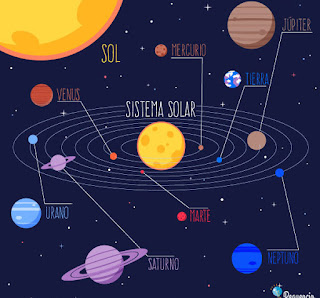CONTENIDOS TEMA 1: EL UNIVERSO
EL UNIVERSO Las estrellas del universo se agrupan en GALAXIAS . Las galaxias tienen estrellas, planetas y otros cuerpos. Nuestro sistema solar pertenece a la VÍA LÁCTEA , que es nuestra galaxia. El Sol es la estrella más cercana a la Tierra . Es una esfera de gases que nos da LUZ Y CALOR . Las estrellas, después de millones de años, mueren: pueden apagarse o, si son estrellas gigantes, explotar (SUPERNOVAS). ¿Cómo medimos las distancias en el universo? Las medimos en AÑOS LUZ . Un año luz es la distancia que recorremos viajando a la velocidad de la luz durante un año. EL SISTEMA SOLAR Alrededor del Sol giran 8 planetas. La trayectoria de los planetas se llama ÓRBITA. Además, los planetas giran sobre sí mismos. A su alrededor puede haber SATÉLITES . Los planetas son esféricos y no tienen luz propia. Se clasifican en: Planetas interiores: Mercurio, Venus, Tierra y Marte. Planetas exteriores: Júpiter, Saturno, Urano y Neptuno Estos grupos


